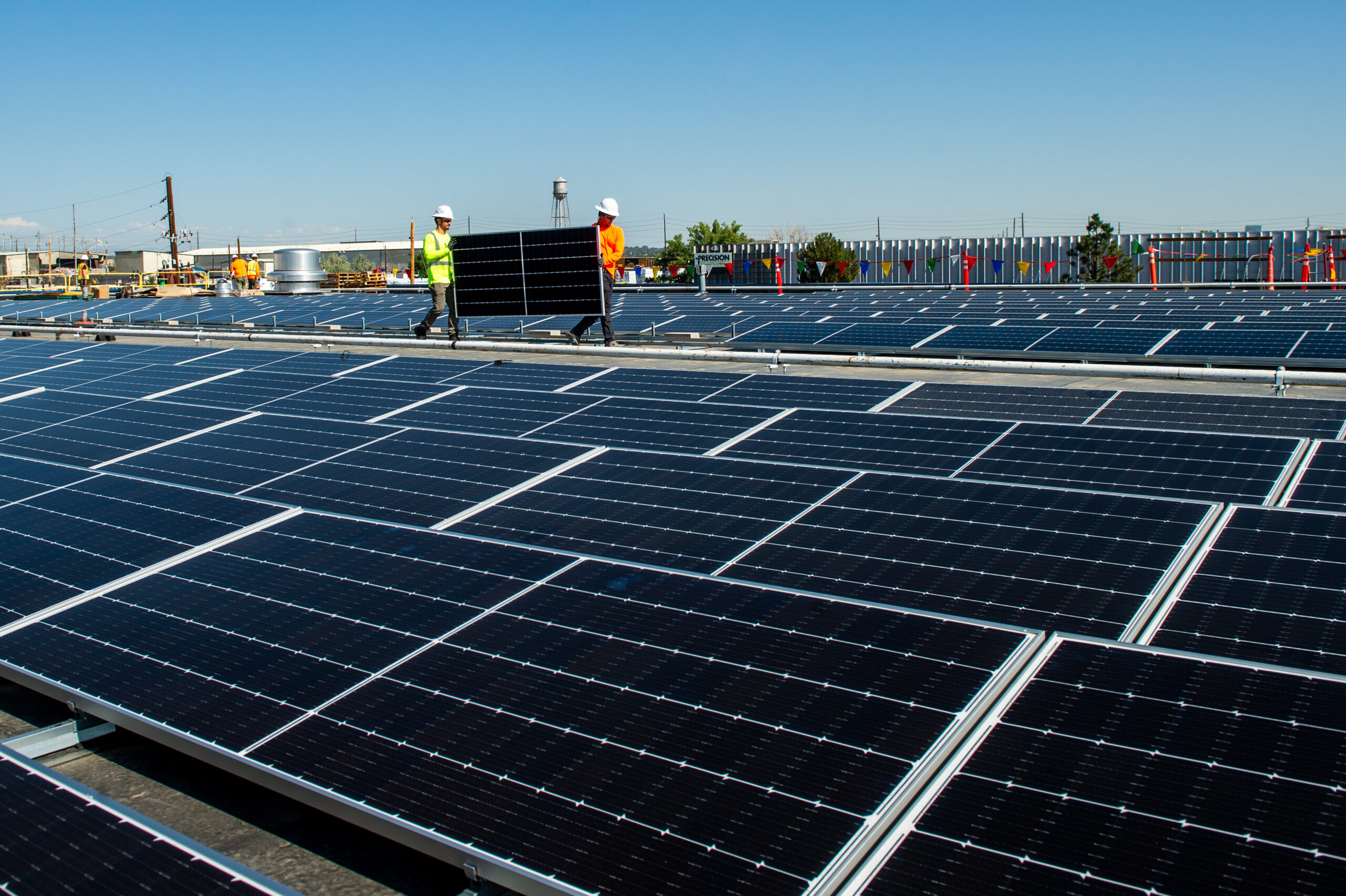
By Rachel Mountain
Commercial Solar in the Denver Metro Area
The opportunity to earn a compelling return on investment by installing solar on your commercial property has improved with supportive policies like the Inflation Reduction Act (IRA). The IRA increased the federal investment tax credit back up to 30%, and when combined with corporate tax rules that allow for 80% bonus depreciation, owners can monetize a minimum of 47% of the system price in the first year. Between the available tax incentives, increasing utility rates, and growing green building requirements, businesses can no longer afford to ignore capital energy improvements like solar.
The reasons for going solar are as varied as the types of businesses that have already invested in it. Some install solar to stabilize their electric bill and reduce exposure to rising utility costs. Many commercial real estate investors use solar to increase building value and attract and retain tenants. Other businesses go solar to strengthen their corporate brand and more closely align with their customers’ values.
What do these businesses have in common? Each has generated tax benefits, increased cash flow, and boosted net operating income. Solar doesn’t just make good financial sense; it’s a differentiator in today’s competitive commercial real estate market.
The demand for solar is increasing. Despite the challenges associated with rising costs and supply chain issues that most industries are all too familiar with, an additional 4.6 gigawatts (GW) of solar was installed in the United States in Q3 2022 alone. Additionally, 22 states and D.C. have made commitments to 100% renewable or carbon-free electricity in the next few decades and are enforcing new commercial code to help reach those goals. Just like we are seeing with Denver’s Green Building Ordinance and Energize Denver, on-site solar can help commercial property owners meet these requirements.
It’s not all sticks though; commercial solar owners can also benefit from the ‘carrots’ that are generous production-based incentives. Under Xcel Energy’s Commercial & Industrial Solar*Rewards Program, Xcel Energy will purchase Renewable Energy Credits (RECs) at 3.5 to 4 cents per kWh produced over a 20-year period. For example, a 200kW system (~30,000-square-foot flat rooftop) generates REC payments of more than $11,000 in year one and can reduce utility expenses by $14,000+, reducing operating expenses and increasing net operating income (NOI).
OPM – Other People’s Money
Colorado’s Commercial Property Assessed Clean Energy (C-PACE) program can enable businesses to implement solar projects that are cash-flow positive from year one on leveraged deals between 50-100% loan-to-cost.
C-PACE can be used to finance any energy improvement to your building with fixed-interest loans up to 25 years. This non-recourse financing minimizes risk to property owners and is tied to the property via a special tax assessment. As a result, C-PACE financing can transfer to the next owner if the property is sold and is non-accelerating.
To capture the long-term financial benefits of solar, commercial property owners need a local and experienced solar developer who can navigate the ever-changing market to design, engineer, install, and maintain a system that will stand the test of time. Reach out to a local solar expert and see how the numbers stack up for your business!
Rachel Mountain is co-owner and commercial solar project developer at Namaste Solar. Namaste Solar’s purpose is to transform energy and transform business. The company’s non-commissioned solar developers will help you understand your project potential, and we’ll be the first to tell you if onsite solar doesn’t make sense for your property. Check out their extensive commercial experience and see how they measure up.









